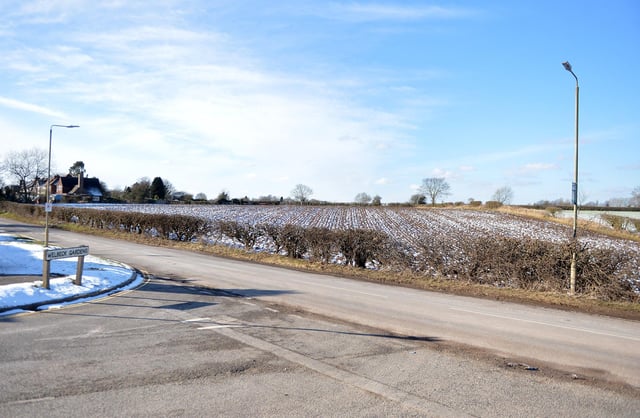Developers at a huge new homes site in Derbyshire say they will continue ‘as planned’ after prehistoric to Roman era remains were found beneath the ground.
By Tim Paget
Friday, 12th February 2021,
Persimmon Homes has secured planning permission to build up to 590 properties on land off Oxcroft Lane, Bolsover, but has been required to organise an archaeological study on site.
Archaeologists discovered evidence of ‘prehistoric to Roman date field systems’ as well as ‘post-medieval agricultural features’, and their findings have been published on Bolsover District Council’s website as part of the planning application.
MORE: Major plans to build 150 homes near Chesterfield could be delayed by archaeological digs

Archaeologists have found Roman and prehistoric remains on the site of a major housing development in Bolsover.
A spokesman for Persimmon Homes Nottingham, said: “As part of our planning consent an archaeological study was undertaken on the land off Marlpit Lane, Bolsover. These types of studies are not unusual on sites which may be of interest.
"The outcome confirmed the presence of probable prehistoric to Roman date field systems as well as exposing post-medieval agricultural features.
“The works are now complete, and all historic data and findings have been accordingly gathered. We are in the early stages of this development and will continue our works as planned.”
Allen Archaeology Ltd was commissioned to undertake an archaeological evaluation by digging trial trenches on land off Marlpit Lane.
"The site lies in an area of archaeological interest, with several prehistoric flint scatters in the vicinity of the site,” the archaeology company said in its report.
"Romano-British occupation has been identified at Sherwood Lodge approximately 400m to the southwest.”
Studies found quantities of prehistoric worked flints and suggests ‘there is some potential for prehistoric activity within the site boundaries’.
“The results of the archaeological evaluation demonstrate that there is a low density distribution of features and deposits of archaeological interest within the targeted area,” the report adds.
Of the 20 trenches excavated, seven were found to contain a small number of ‘linear features’, generally one or two features per trench.
This included pottery ‘of a possible Bronze Age date’ and a piece of possible Roman quern.
Archaeologists concluded: “Overall the evidence suggests that the excavated features represent part of a potentially later prehistoric to Roman agricultural landscape, with the environmental evidence and very low density of finds suggesting the site lies away from any settlement focus.”
A spokesman for Persimmon Homes Nottingham, said: “As part of our planning consent an archaeological study was undertaken on the land off Marlpit Lane, Bolsover. These types of studies are not unusual on sites which may be of interest.
"The outcome confirmed the presence of probable prehistoric to Roman date field systems as well as exposing post-medieval agricultural features.
“The works are now complete, and all historic data and findings have been accordingly gathered. We are in the early stages of this development and will continue our works as planned.”
Allen Archaeology Ltd was commissioned to undertake an archaeological evaluation by digging trial trenches on land off Marlpit Lane.
"The site lies in an area of archaeological interest, with several prehistoric flint scatters in the vicinity of the site,” the archaeology company said in its report.
"Romano-British occupation has been identified at Sherwood Lodge approximately 400m to the southwest.”
Studies found quantities of prehistoric worked flints and suggests ‘there is some potential for prehistoric activity within the site boundaries’.
“The results of the archaeological evaluation demonstrate that there is a low density distribution of features and deposits of archaeological interest within the targeted area,” the report adds.
Of the 20 trenches excavated, seven were found to contain a small number of ‘linear features’, generally one or two features per trench.
This included pottery ‘of a possible Bronze Age date’ and a piece of possible Roman quern.
Archaeologists concluded: “Overall the evidence suggests that the excavated features represent part of a potentially later prehistoric to Roman agricultural landscape, with the environmental evidence and very low density of finds suggesting the site lies away from any settlement focus.”
No comments:
Post a Comment